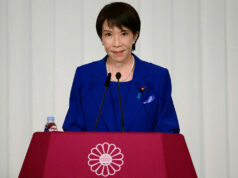2017 forex reserves beat BSP forecast
THE country’s foreign exchange reserves rose to a level that surpassed the Bangko Sentral ng Pilipinas’ forecast for 2017 on the back of higher gold valuations and higher inflows from the central bank’s investments abroad, data on Friday showed.
Gross international reserves (GIR) totalled $81.467 billion last month, preliminary data from the BSP showed. This is up from November’s $80.309 billion and $80.691 billion logged in December 2016.
The end-2017 level of reserves was higher than the central bank’s forecast of $80.7 billion, Reuters reported on Friday. The BSP expects the GIR to be at $80 billion by year’s end.
Boosting the reserves were “inflows arising from the BSP’s foreign exchange operations, net foreign currency deposits by the National Government, revaluation adjustments on the BSP’s gold holdings resulting from the increase in the price of gold in the international market, and income from the BSP’s investments abroad,” the statement read.
Value of BSP’s gold holdings rose to $8.336 billion from November’s $8.045 billion and December 2016’s $7.259 billion, reflecting higher gold prices in the market.
Central bank’s foreign investments, which accounts for the bulk of GIR, grew to $65.763 billion, up from $65.178 billion registered in November, but shrinking from end-December 2016’s $68.290 billion.
The BSP’s foreign exchange holdings also rose to $5.742 billion at end-December from $5.445 billion in November and from $3.563 at end-2016.
The central bank sometimes uses the reserve fund to influence daily peso-dollar trading by buying or selling more units in a “tactical intervention” in attempts to temper exchange rate swings.
The peso averaged P50.379 versus the dollar last month, recovering slightly as the local currency traded between the P50 and P51 level in November.
The country’s special drawing rights — the amount which the country can tap from the IMF’s reserve currency basket — was $1.2 billion.
Amounts in the IMF basket are expressed in US dollar, Japanese yen, euro, British pound and the Chinese yuan.
“The end-December 2017 GIR level remains adequate as it can cover 8.3 months’ worth of imports of goods and payments of services and primary income,” the BSP statement read.
“It can likewise pay up to 5.8 times the country’s short-term foreign debt when computed on original maturity, and up to 4.2 times based on residual terms,”
International reserves are a key measure of a country’s macroeconomic footing, providing a buffer against external financial shocks. — Karl Angelo N. Vidal



